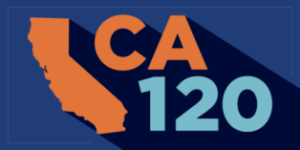Analysis
CA120: Primary could have historically low turnout
 Image by Cagkan Sayin
Image by Cagkan SayinThere’s only two weeks before the completion of the 2024 March Primary and early numbers are suggesting an historically low turnout.
Last year we looked at turnout patterns in presidential primary elections, and the lesson was that they can be very erratic – chiefly driven by the competitiveness of the partisan presidential primaries. That analysis found that a competitive presidential primary can drive turnout for both parties, increasing participation for infrequent voters. But when there isn’t a competitive presidential primary these numbers drop – and turnout drops more precipitously for Democrats.
The prospect we were facing just at the end of 2023 was a very asymmetric election where Democratic turnout in the primary would suffer, given no real contest to the Biden re-nomination, and Republican turnout could spike with a competitive Nikki Haley or Ron DeSantis challenge to Donald Trump.
 That Republican primary challenge to former President Donald Trump has fizzled, Haley being unable to make the top-two out of Ohio, failing to win in New Hampshire, losing to a “none of the above” option in Nevada, and being on the precipice of getting trounced in her home state of South Carolina. But it does seem that, at least for media coverage purposes, she is putting up a nominal fight through Super Tuesday that could get Republicans to turnout a bit more than if she were to drop out completely.
That Republican primary challenge to former President Donald Trump has fizzled, Haley being unable to make the top-two out of Ohio, failing to win in New Hampshire, losing to a “none of the above” option in Nevada, and being on the precipice of getting trounced in her home state of South Carolina. But it does seem that, at least for media coverage purposes, she is putting up a nominal fight through Super Tuesday that could get Republicans to turnout a bit more than if she were to drop out completely.
Looking at the returns thus far, we can see the beginnings of a low-turnout election, potentially with a relatively higher Republican turnout.
Comparing to past elections can be a bit tricky as the state’s registration has ballooned over the past several election cycles and this is the first primary in which all voters received ballots in the mail.
Looking as far back as 2016 we can see what happens when there are competitive primaries for both Republicans and Democrats – at this point in the election cycle already 10% of all vote-by-mail ballots had been returned. However, there were only 10 million voters who received ballots in the mail, and they were traditionally more motivated voters.
2020 Primary was not competitive on the Republican side, but there was a competitive Democratic primary. Turnout at this point in the election was at 5.5%, and even though there were only 16 million ballots mailed, there had already been 85,000 more ballots returned.
Looking at the 2022 Primary is at least a similar number of mailed ballots, at 21 million, but it was a gubernatorial primary – the lowest turnout type of statewide election. Yet, again, at this point turnout was higher by more than 50,000 votes.
The demographics of the electorate thus far could also be telling us something about eventual turnout. Democrats are currently at 49% of ballots returned, just two-points higher than their base registration, but Republicans are at 32%, 6-points over their base registration. Predictably, independents are the ones who really are sitting on the couch – while they are 29% of voters, they are only 19% of ballots that have been returned to Counties.
The electorate is also incredibly old, with seniors being only 25% of the electorate, but 57% of returns. Voters 18-34, also 25% of the electorate, are only 8% of returns. White voters are also outperforming – while they are 55% of registrants, they are 70% of returns, and while Latinos are at a record high 28% of voters, they are at just 15% of ballots returned.
The impacts of these turnout numbers on campaigns can be massive. Lower turnout is correlated with more volatile election outcomes. Will this have an impact on a big race like the US Senate contest? Maybe. A higher Republican turnout would point to a race in which Steve Garvey makes it to the General election, closing out the election for two of the three main Democratic challengers.
A low turnout election, especially with relatively higher Republican participation, could also cause many legislative and congressional races in heavily Democratic districts to be decided in the primary when a Republican makes the runoff.
If you want to track the returns as they continue to come in, you can sign up to receive a free PDF in your inbox each morning by filling out the PDI Early Vote form here. This will get you a full demographic breakdown and map of turnout as it comes in each day – and you can select to receive it as a statewide report, or a report for your local legislative, congressional or local election.
Paul Mitchell is a regular contributor to Capitol Weekly, the creator of the CA120 column, vice president of Political Data and owner of Redistricting Partners, a political strategy firm.
Want to see more stories like this? Sign up for The Roundup, the free daily newsletter about California politics from the editors of Capitol Weekly. Stay up to date on the news you need to know.
Sign up below, then look for a confirmation email in your inbox.

Leave a Reply